In our ASUS RS720A-E12-RS24U review, we see how this AMD EPYC 9004 Genoa platform improves on the previous generation. At STH, we reviewed the ASUS RS720A-E11-RS24U for the AMD EPYC 7002/7003 series. Now, AMD has a new processor with a new socket. With it comes a host of new technologies that make this an enormous generational upgrade.
ASUS RS720A-E12-RS24U Video Overview
For this, we are going to have a video. We did a video on the GPU-focused variant of the E11 generation that you can find here for some comparisons. We thought this new generation needed a new video:
As you will see in the video, we needed the help of ASUS, AMD, and Micron to make this review possible. It takes an enormous amount of hardware to make something like this work so a quick thank you to those companies.
Next, let us get to the hardware.
ASUS RS720A-E12-RS24U External Hardware Overview
The RS720A-E12-RS24U is a 2U chassis that should look familiar as it is a design ASUS has been using for some time. The 840mm / 33.07″ depth chassis is immediately recognizable as an ASUS design with small pull handles at either side to help move the system in and out of racks.
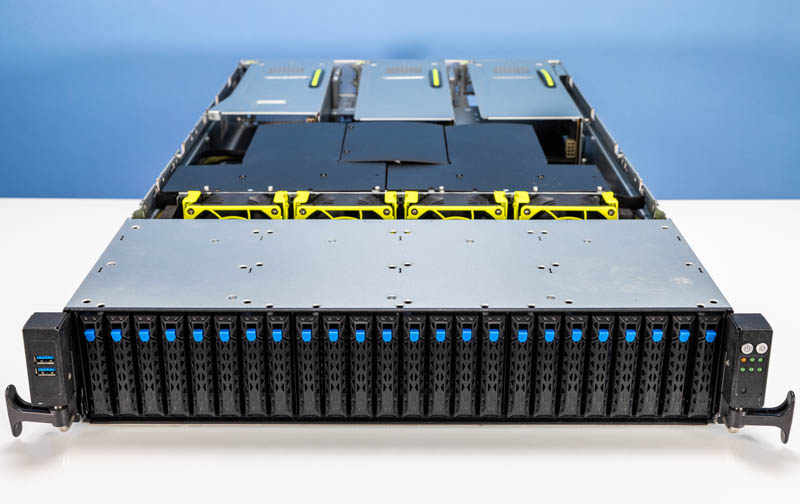
The front of the system is a 24x 2.5″ bay, hence the “RS24U” model number. Each of the 2.5″ bays is tool-less in its design, saving service time.
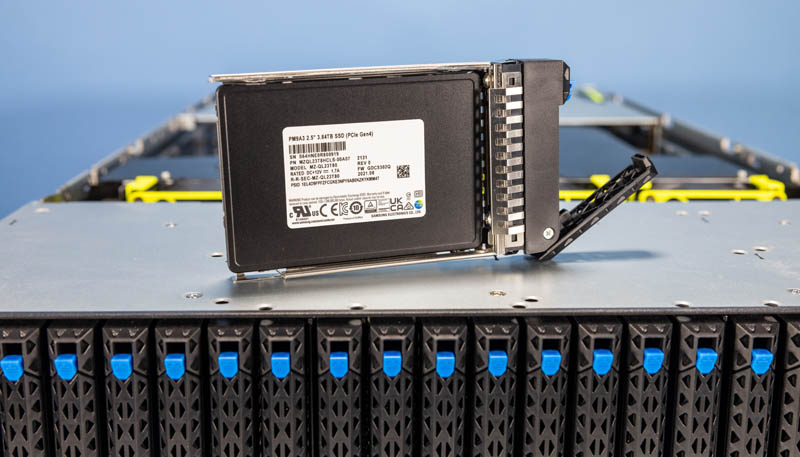
The bay configuration is quite interesting. One option, and the one we are looking at, has all 24x 2.5″ bays as NVMe with the first eight being SATA (SAS optional.) The other option is for a mix of NVMe and SATA/SAS.
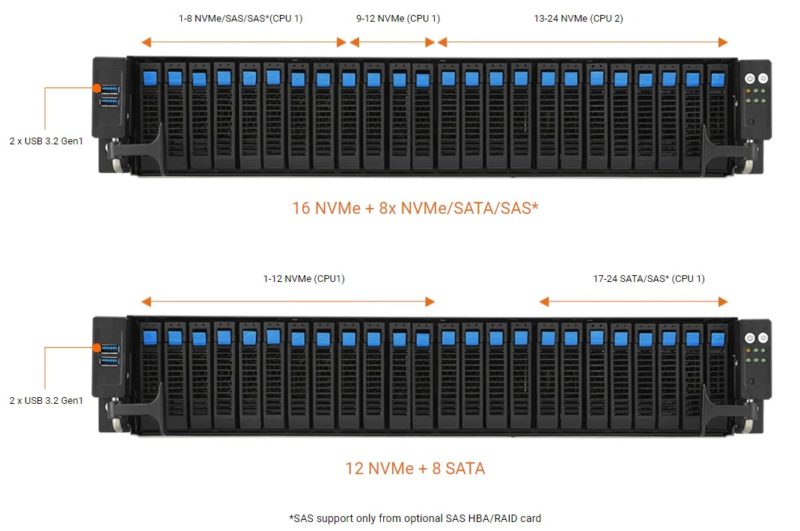
Our system has two PCIe switches that provide lanes for twelve drive bays each. Each set of twelve 2.5″ bays has a x16 connection back to the system via these backplane cards. This is a really interesting design, as it is designed for PCIe Gen4 operation. Next week, we will discuss trends on PCIe drives, but when one sees 2023/2024 PCIe generation trends, this makes a lot of sense. We will discuss it a bit more here in the topology section of this review.
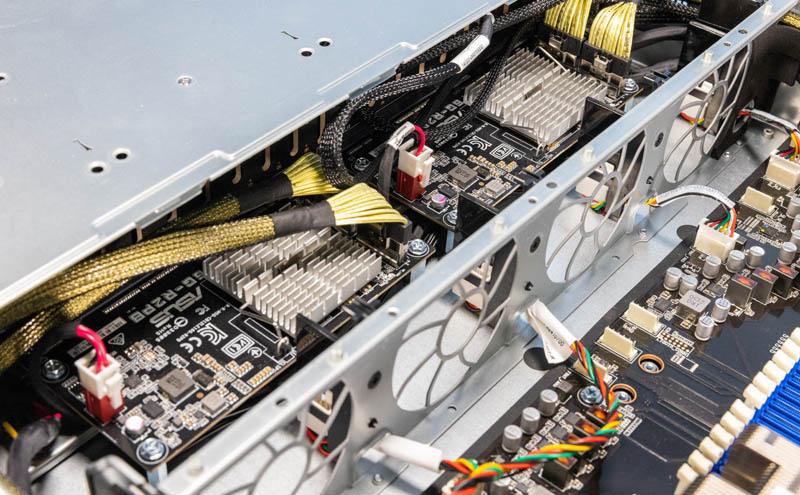
On the left side, we get two USB 3 Type-A ports.
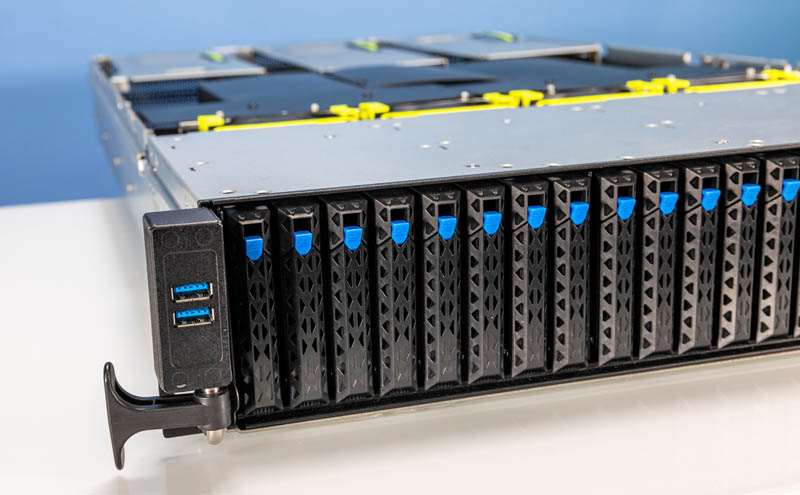
On the right side, we have the power and ID buttons along with status LEDs.
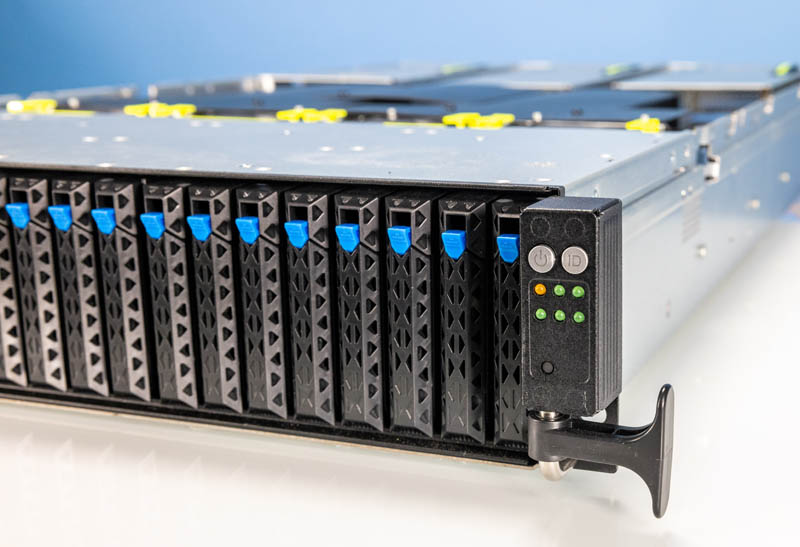
The rear of the unit displays one of the main features of this system, its array of PCIe Gen5 expansion slots.
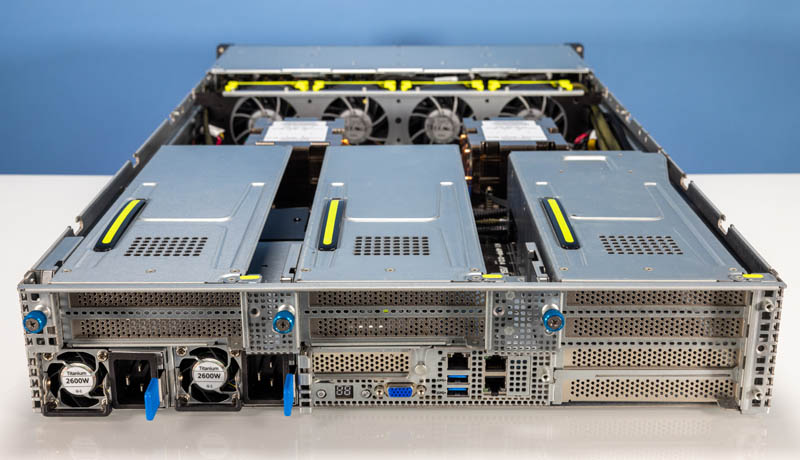
On the left rear, we have two full-height slots above the power supplies.
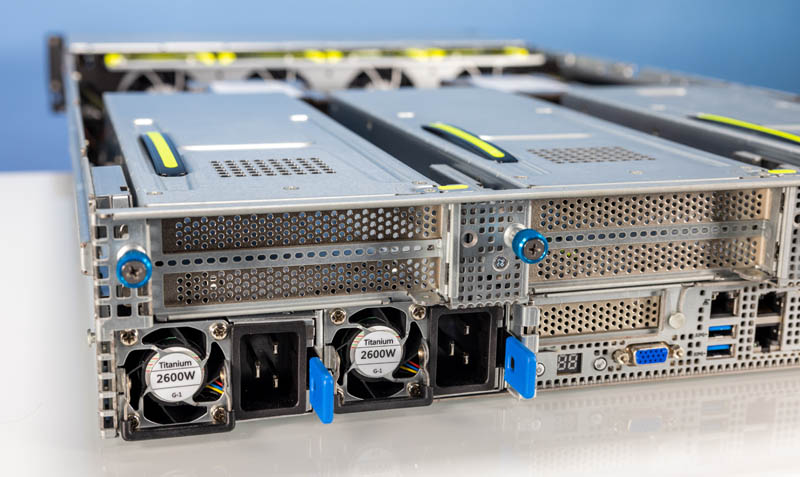
The redundant (1+1) power supplies are 2.6kW Gospower 80Plus Titanium units.
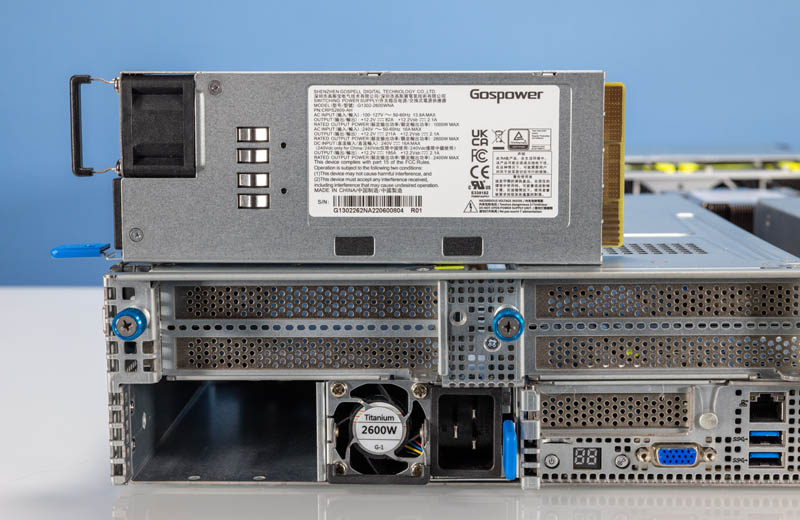
In the center of the system, we have two full-height and one low-profile expansion slot. The rear I/O block has the standard ASUS POST code display along with a VGA and two USB 3 Type-A ports for data center KVM access. There is also the out-of-band management port for the ASMB11 management solution.
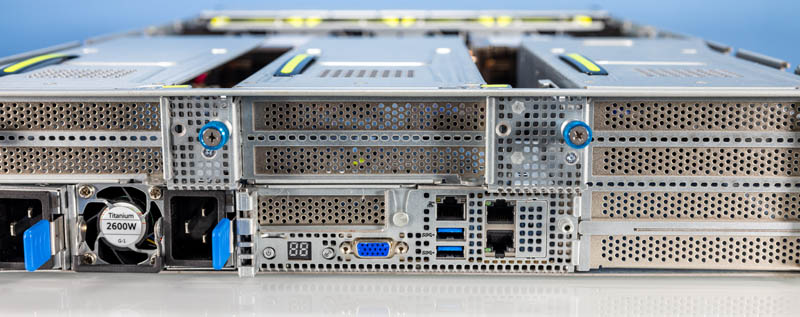
Next to that is a configurable option for base I/O. Our system has a dual 10Gbase-T option, but there is a quad 1GbE option available as well. Those are connected via AMD’s new PCIe Gen3 lanes for lower-speed I/O like these 1/10GbE NICs.
The right rear is solely focused on four PCIe Gen5 full-height expansion slots.
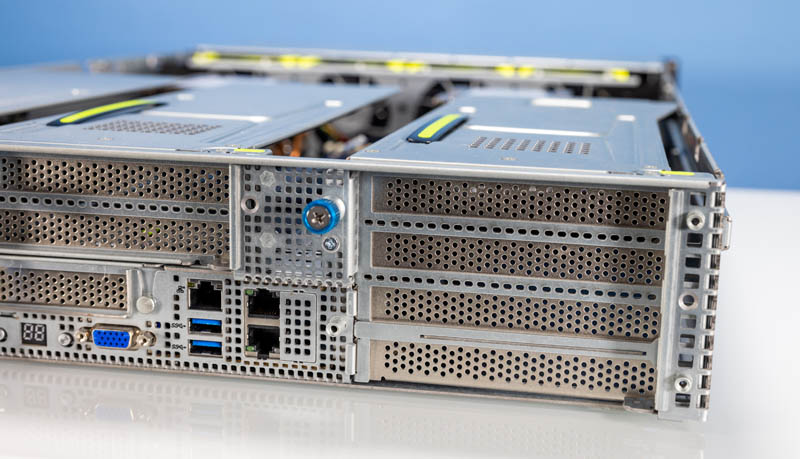
Let us get inside the system next to see how it works.

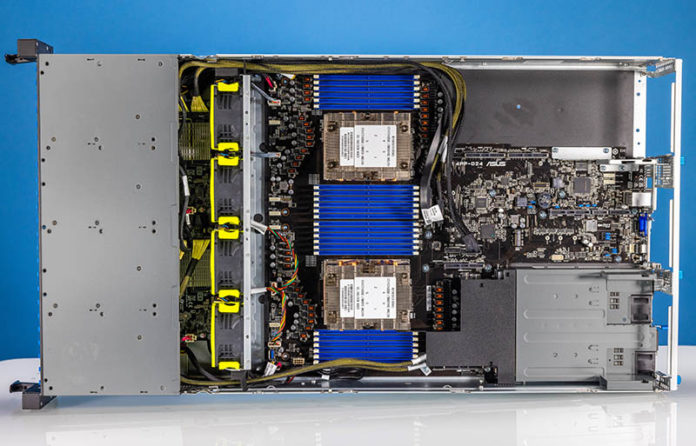



Thank you Patrick.
It’s really interesting to see such performance with traditional cooling solution.
As you mentioned, other vendors are using quite impressive cooling solutions like closed loop liquid cooling or big radiators with heat pipes.
I wonder how such design like the one Asus used will cope with full rack scale.
How big is the loudness of this server ?
This is the best server I’ve seen from Asus or anyone else. How does Asus warranty compare to let’s say to Dell, hpe, Lenovo?
It looks like a fantastic server, love the focus on I/O without worrying so much about legacy interfaces like SAS. Unfortunately as far as I can see the prices are around USD 7000, EUR 6500, AUD 20k so a bit pricey for the homelab.
It isn’t a bad price for the enormous compute and I/O it provides.
HPE and Dell will indeed be coming along with their own equivalents along with vendor price inflation too.
Glad the likes of Asus and their counterpart Asrock, along with Supermicro exist, in all fairness 7K is easily within budget of the more advanced content-creators/homelabbers/home-AI-devs/smaller-companies dabbling in compute tasks/dev.
Well done Asus, a lovely very usable design sticking to industry standards and some backwards compatibility at realistic pricing. A super well done to STH for covering this. I know what is on my summer shopping list this year ;)